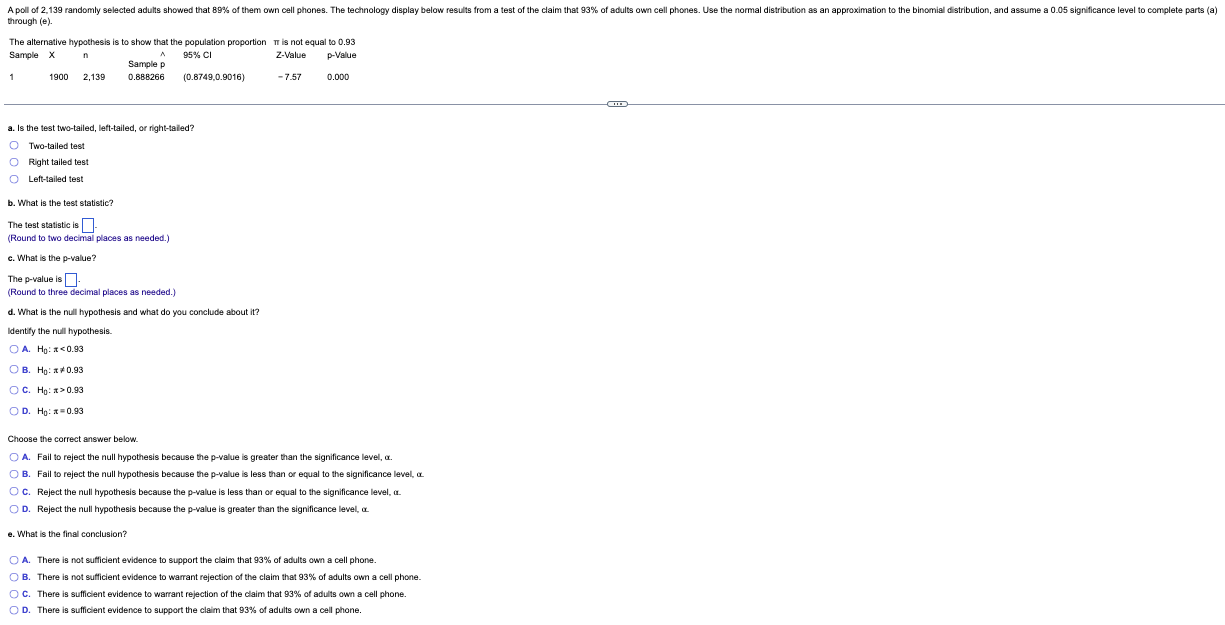Home /
Expert Answers /
Statistics and Probability /
a-is-the-test-two-tailed-left-tailed-or-right-taled-two-tailed-test-right-tailed-test-left-tai-pa646
(Solved): a. Is the test two-tailed, left-tailed, or right-taled? Two-tailed test Right tailed test Left-tai ...
a. Is the test two-tailed, left-tailed, or right-taled? Two-tailed test Right tailed test Left-tailed test b. What is the test statistic? The test statistic is (Round to two decimal places as needed.) c. What is the p-value? The p-value is (Round to three decimal places as needed.) d. What is the null hypothesis and what do you conclude about it? Identity the null hypothesis. A. \( \mathrm{H}_{0}: \pi<0.93 \) B. \( \mathrm{H}_{0}: \pi \neq 0.93 \) C. \( \mathrm{H}_{0}: \pi>0.93 \) 2. \( H_{0}: \pi=0.93 \) Choose the correct answer below. 4. Fail to reject the null hypothesis because the p-walue is greater than the significance level, \( \alpha \). B. Fail to reject the null hypothesis because the p-value is less than or equal to the significance level, \( \propto \) c. Reject the null hypothesis because the p-walue is less than or equal to the significance level, a. ?. Reject the null hypothesis because the p-walue is greater than the significance level, \( \propto \) e. What is the final conclusion? 1. There is not sufflicient evidence to support the claim that \( 93 \% \) of adults own a cell phone. B. There is not sulficient evidence to warrant rejection of the claim that \( 93 \% \) of adults own a cell phone. C. There is sufficient evidence to warrant rejection of the claim that \( 93 \% \) of adults own a cell phone. 3. There is sufficient evidence to support the claim that \( 93 \% \) of adults own a cell phone.
Expert Answer
Solution: given that, Sample (n)=2139 x=1900 P?=Xn=0.888266 a) Hypothesis: Ho:p=0.93 Ha:p ?0.93 Two- tailed test. b) test statistic: Z=P??pp(1?p)n=?7.
